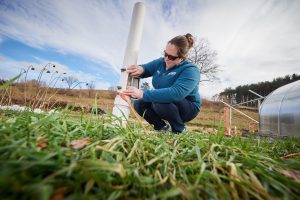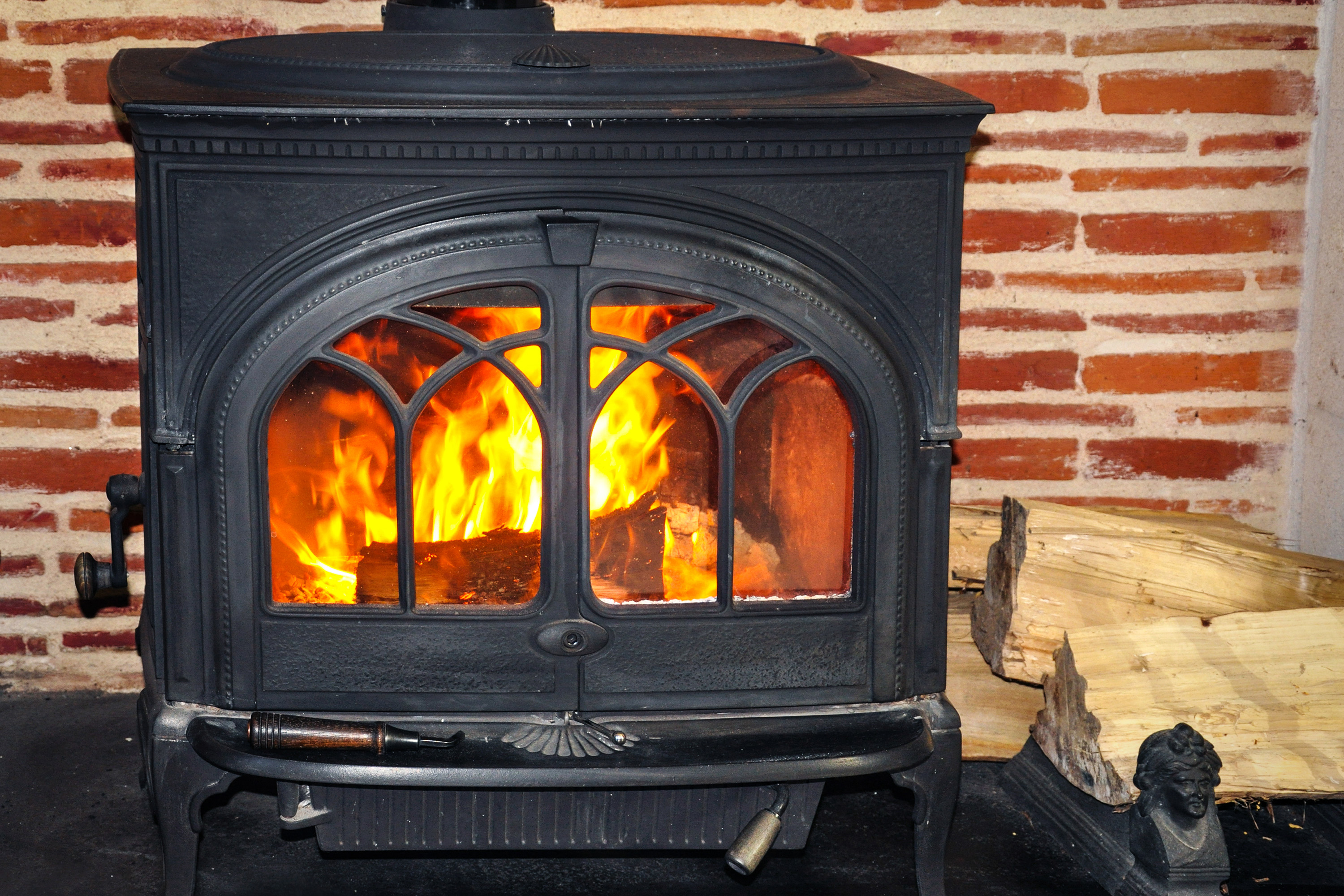With all the trees there are in Connecticut, it might be surprising to learn that the state’s air quality is not great. One reason is its location in an area known as the urban corridor, between Boston and New York City, as well as being downwind from the rest of the country. But beyond the urban centers, even rural areas in Connecticut experience less-than-ideal air quality at certain points during the year, largely because of the impact of human activities on Anything that we put into the air will eventually come back downthe air we breathe.

Assistant professor of chemical and biomolecular engineering Kristina Wagstrom researches air quality and ways to better monitor it. She says overall air quality in the U.S. has improved dramatically since the passing of the Clean Air Act in 1970, yet each year, particulate matter – a mixture of solid particles and liquid droplets found in the air – still leads to the deaths of 88,000 Americans. That’s around twice the number of people killed by car accidents annually.
History of Bad Air
Anything that we put into the air will eventually come back down. — Kristina Wagstrom
“In most areas of the United States, air pollution is getting a little better,” she says. “But globally, there are areas that are getting worse.”
Wagstrom points to the history of this country to help explain this. The United States went through periods of very poor air quality in the past, as the country began to industrialize and large swaths of forest were clear cut to fuel industrialization. Today, countries experiencing growth in industry are also experiencing poor air quality, following much the same path environmentally as the United States did.
Air pollution is largely composed of byproducts of combustion, such as sulfur dioxide, which reacts with other substances to form sulfate that may condense on particulate matter and return to the earth as acid rain; or the sulfate may stick directly to surfaces, where it will meet with precipitation and eventually return to the earth, acidifying the water it contacts.
“Anything that we put into the air will eventually come back down,” Wagstrom points out. “Ultimately, pollution is removed from the air in one way or another.”
The implications of air pollution for human health are broad, including respiratory and cardiovascular complications and more. And new outcomes are linked to poor air quality each year: “In the case of particulate matter,” Wagstrom says, “it can actually enter your bloodstream through your lungs.”
Because of how air moves around the planet, unfortunately pollution created in one place may impact people thousands of miles away. Studies measuring air quality on the West Coast, for example, show that it is affected by air pollution from China, although those living closer to the source of pollution are at even greater risk.
One area of Wagstrom’s research focuses on trying to develop ways to better assess concentrations of air pollution for estimations of exposure. “For instance, people who live closer to roads, what does that mean for their exposure?”
Spring and Summer (‘Ozone Season’)
Here in Connecticut, besides pollen and mold causing breathing difficulties for some in the warmer months, the main problem is ozone, Wagstrom says, and it’s an example of how human activities, coupled with trees, become problematic.
Although ozone forms Earth’s protective atmosphere, down near the planet’s surface, it depletes air quality. Ozone is formed as nitrogen oxides are emitted as byproducts of combustion, from a car’s engine for example. The nitrogen oxides then react with volatile organic compounds in a reaction catalyzed by ultraviolet light from the sun.
Volatile organic compounds also often originate from trees, says Wagstrom, and this is why greener areas, like the suburbs, tend to have higher ozone levels than urban areas. That doesn’t mean that trees are bad, however. Even though they have a hand in providing the building blocks for ozone, she says, trees are good for air quality in ways that greatly outweigh the negatives.
Ozone season is something that should be on everyone’s radar, especially those with breathing difficulties. According to the Connecticut DEEP website, ozone season used to extend from April through September but the term was expanded in 2017 to include the month of March, since March has become on average a warmer month.
Fall and Winter
Yet even when ozone season is over, air quality remains problematic in the colder months. Wintertime sees increases in particulate matter levels, as biomass and oil heating fuels are burned, Wagstrom notes, and this is one of the reasons why air quality declines during the colder months, especially in more rural areas with higher rates of burning wood as heating fuel.
“One of the things that surprised me when I moved to Connecticut is how many people burn wood to heat their homes,” she says. “Although wood can be cheap, it does produce a lot of particulate matter.” In the winter, when the winds are low, meteorological conditions mean the smoke can just settle, and as smoke settles, it can infiltrate back into the house.
To Improve, Start at Home
Thinking about how much water we’re using is extremely important, because clean running water is energy-intensive. — Kristina Wagstrom
While we cannot control what pollutants are released elsewhere, Wagstrom says there are several things we can all do to improve air quality in our daily lives and where we live. It starts with being more conscious about our consumption in general, she says.
Being mindful of water use is one way: “Thinking about how much water we’re using is extremely important, because clean running water is energy-intensive.”
The Environmental Protection Agency says between 30 and 40 percent of municipal energy costs can be attributed to water treatment and providing clean water.
Buying local is important, too, because it reduces the distance goods need to travel. And try to reduce driving if possible, by being strategic in order to cut down on the number of trips taken. Carpooling, using public transportation, walking, or biking also contribute to a reduction in the amount of fuel used for travel.
Wagstrom also recommends turning down the thermostat and conserving heat to reduce the amount of electricity, gas, wood, or oil used. That will help improve air quality at home.
“Make small changes and try to keep adding more [beneficial] habits,” she suggests. “Eventually they’ll become second nature. Do what you know you can stick with. These measures will impact air quality right at your house, and you’ll reap the benefits right away.”
Wagstrom says one bit of good news in terms of air quality is that if we stopped all emissions now, in a month or two we would be largely back at natural, pre-industrial levels of air pollutants. However, carbon dioxide and its effects on climate change would continue to linger.
To learn more about the air locally, check the Environmental Protection Agency’s real-time air forecast at airnow.gov or the My Environment page for Connecticut.
Wagstrom’s research is funded by two National Science Foundation grants: Career Award #1752231 and CBET Award #1705813.
This article is part of a series on Climate Change in Our Backyard.



